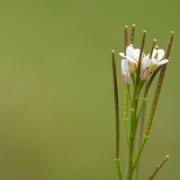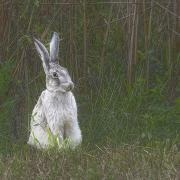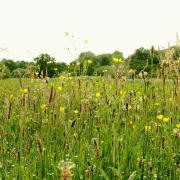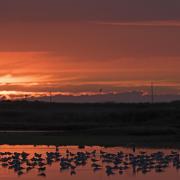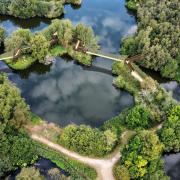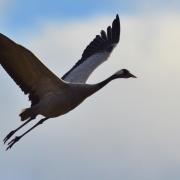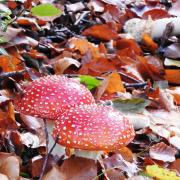Norfolk Wildlife Trust ambassador Nick Acheson explains why ancient woodlands are vital for us - and why they cannot be easily replaced
I recently heard an interview with a health scientist, in which he stressed the importance of a diet including a wide range of plants, of multiple colours and from multiple botanical families. This was not merely for the nutrients offered by the plants themselves, but - more importantly - for the diversity of benign micro- organisms which such a diet introduced to a person’s gut.
For the strongest evidence exists that a rich gut flora contributes enormously to digestion and by consequence to health, both physical and mental. This makes intuitive sense, since for the overwhelming majority of human evolution - from Australopithecus to Homo sapiens - our ancestors gathered their food from landscapes rich in plants and animals. Rich too in benign bacteria.
It struck me, listening to this academic, that the same is true for biodiversity conservation. We neglect micro-organisms at our peril.
Today I am visiting Norfolk Wildlife Trust Foxley Wood, half-way along the valley of the River Wensum. I try to visit every year in early May, to witness the magnificent swathes of bluebells which flood the sandy northern quarter of the wood.
Bluebells draw thousands of people here each year and to our Ashwellthorpe and Wayland Woods. Among these visitors, some are botanists, who will carefully examine flower shapes to distinguish common dog violets from early dog, and check leaves and sepals to separate barren strawberry from wild.

Some will be birders, who will note the spring songs of blackcaps and garden warblers, the drumming of great spotted woodpeckers and the red kite’s lazy loops above the wood. Some will be entomologists, watching orange- tip butterflies as they flit through glades of bluebells and listening for the buzz of vestal cuckoo bees, freshly emerged from hibernation.
Few, though, will think of soil and the precious diversity of organisms it supports, which in turn support the hum and haze of life we see here.
Foxley is mentioned in the Domesday Book, as having sufficient woodland foraging - known as pannage - for 300 sows. Though not explicit, it is highly likely that this woodland is the self-same Foxley Wood which is cared for by Norfolk Wildlife Trust today.

Thus, the wood we know, vivid with bluebells at this time of year, was already established 1,000 years ago. In the simplest terms, this makes the wood a priceless store not just of charismatic species - though they are found here in abundance - but also of microscopic interactions in the soil, between plant roots, fungi, minerals, worms, springtails, bacteria and more. It means - to borrow an analogy from the scientist quoted above - that the wood has an exceptional flora of micro-organisms, and its soil is consequently in exceptional health.
We know, from abundant scientific research, that old soils, with a long history of interactions between many species, are best at delivering what - with our penchant for sterile jargon - we term ecosystem service. This means old and biodiverse soils are best at sequestering carbon, best at feeding worms, best at holding water, best at maintaining their integrity, resisting erosion, and withstanding floods.

Ultimately, they are also best at feeding us. This is why, all across the county and beyond, farmers are wisely taking ever greater care of soils, planting cover crops to increase organic matter and prevent erosion, reducing chemical inputs and allowing natural cycles to restore themselves. Environmentally, this is excellent news.
In the field of development, a current catchphrase is ‘net gain for nature’. Properly used, this is the important principle that any habitat damaged or destroyed must be more than replaced by new habitat created elsewhere, which is of comparable value for wildlife. It is part of an aspiration for a wilder, better-connected landscape, with threefold benefits: for wildlife, for people and for our shared environment.
Excellent as this ambition is, it must be applied with rigorous precaution, and never used to justify inappropriate development. Recall that in its soils an ancient wood holds hundreds, if not thousands, of years of interactions between fungi, plants, bacteria, rainfall, frost, sunshine, wild animals, humans and our livestock.
Such soil history, biodiversity, chemistry and health are fundamentally irreplaceable. Certainly, they can never be replaced - as ’net gain for nature’ is sometimes co-opted to suggest they can - by a moderately larger area of bulldozed topsoil planted with ranks of imported saplings in plastic tubes.
In the same way, an ancient meadow can never be replaced by a slightly larger area of oxeye daisies and bird’s-foot trefoil from a cultivated mix. They are simply not the same as the flowers and fungi, bacteria and invertebrates which nature and hundreds of years of history have nurtured. This is also true for wetlands, and for heaths and sand dunes, for chalk grassland and for scrub. Time and the absence of chemical and industrial disturbance are the key ingredients both for biodiversity and for functioning ecosystems, which deliver the very services we too need.
The moral is that, if we are to restore our landscape, bringing back biodiversity and ecosystem services, we must start by outlawing any further destruction of precious ancient habitats. For, just as a First Folio of Shakespeare’s plays (published in 1623, more than 500 years after Foxley Wood was mentioned in the Domesday Book) can never be replaced by two ebooks of the same material, so too an ancient habitat can never be replaced by a somewhat larger area of saplings embraced by plastic or by commercial seed mixes of common flowers. The old and new are simply not the same. Neither in quality nor importance.
Miracles are everywhere in Foxley Wood today. All along the path, and pushing through the crust of moss on fallen boughs, the delicate blooms of wood sorrel light my way. A nuthatch is in trilling song nearby; the blousy petals of wild cherry quiver in the breeze. Norfolk Wildlife Trust is proud to protect this ancient place and countless others. And we stand for every other priceless, ancient place in Norfolk too.
Visit NWT Foxley Wood
NWT Foxley Wood is free to visit and open 10am till 5pm, Friday to Wednesday (closed Thursdays) all year round. Visitors can enjoy a riot of colour in late April to early May, when bluebells carpet the woodland floor.







